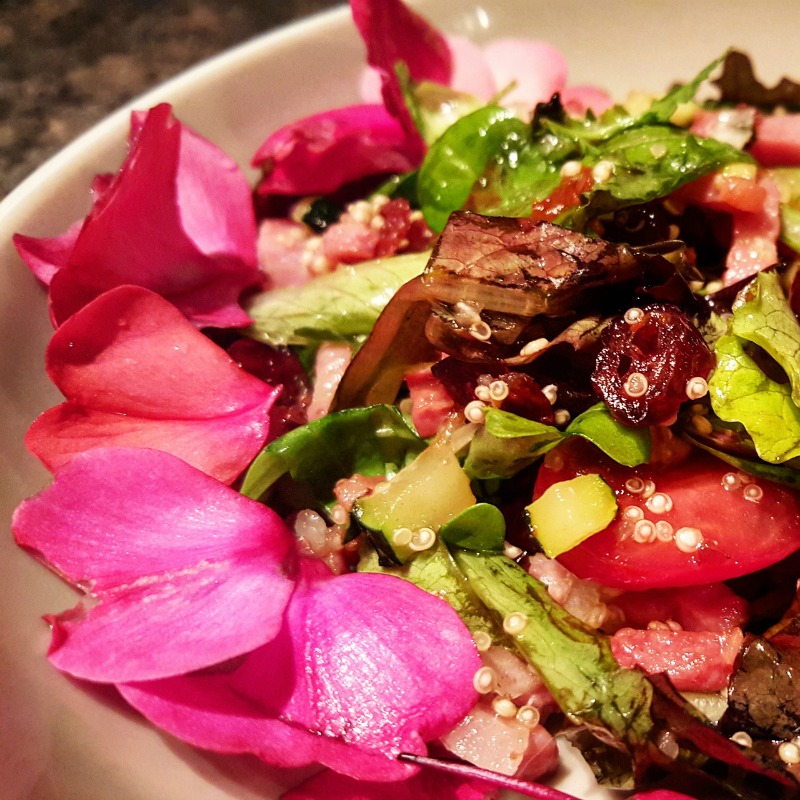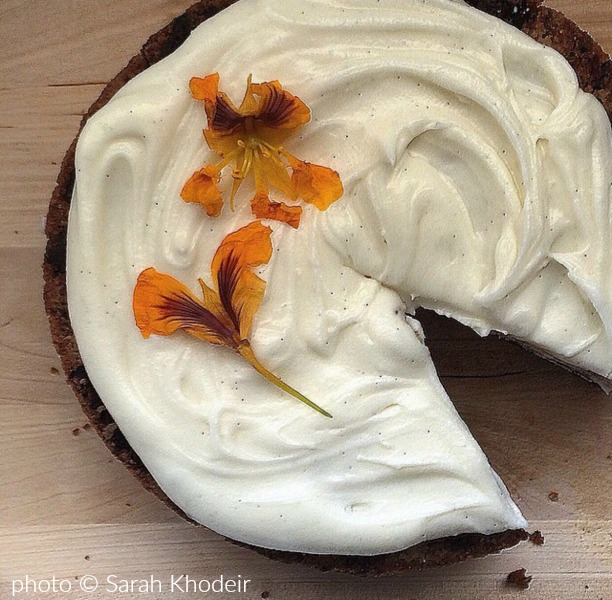
Ever wondered what it would be like to eat a flower?! Well, I can tell you it’s appetizing and yummy. Not only does it give your plate a stylish presentation, but it also upgrades the taste of the food with a delicious twist. Many edible flowers have sharp and unique flavors that you can’t substitute for with herbs and they also have rich textures and vibrant colors, giving food a pout of brightness. They are creative and innovative ingredients that will definitely grab the attention of whoever lays their eyes on the food garnished with these beauties. Simply, adding flowers to your food awakens your senses.
Many flowers are safe to use in food recipes, while others are definitely not. So, if you are daring and ready to experiment with new and out-of-the-box ingredients like edible flowers, make sure they are safe to consume. (see below)
 Edible flowers are flexible to use as:
Edible flowers are flexible to use as:
- One of the ingredients in a main dish
- Sprinkled on salads
- Baked with desserts
- Garnish
- Flavoring for hot or cold drinks
- Ice cream
- Marmalades
- Dressings
- Marinades
- Medicinal or culinary herbs. (In Lebanon, White Coffee, which is a very popular beverage, is known to help with digestion. It is made of boiling rose petals and drinking the water.)
Like vegetables and fruits, the fresher picks the better and more favorable the edible flowers will be. To ensure their freshness, always store them in an airtight container while placing them on moist kitchen paper. By doing so, they can last for up to 10 days without going bad or limpy. It is recommended that you introduce them gradually to your food intake, and watching for any allergic reaction.
Here are some of the most common edible flowers:
Allium: All blossoms from the allium family (leeks, chives, garlic, garlic chives) are edible and flavorful! Flavors run the gamut from delicate leek to robust garlic. Every part of these plants is edible.
Angelica: Depending on the variety, flowers range from pale lavender-blue to deep rose and have a licorice-like flavor.
Anise hyssop: Both flowers and leaves have a subtle anise or licorice flavor.
Arugula: Blossoms are small with dark centers and with a peppery flavor much like the leaves. They range in color from white to yellow with dark purple streaks.
Bachelor’s button: Grassy in flavor, the petals are edible. Avoid the bitter calyx.
Basil: Blossoms come in a variety of colors, from white to pink to lavender; flavor is similar to the leaves, but milder.
Bee balm: The red flowers have a minty flavor.
Borage: Blossoms are a lovely blue hue and taste like cucumber!
Calendula / Marigold: A great flower for eating, calendula blossoms are peppery, tangy, and spicy — and their vibrant golden color adds dash to any dish.
Carnations / Dianthus: Petals are sweet, once trimmed away from the base. The blossoms taste like their sweet, perfumed aroma. They are an economic alternative to expensive saffron, though not quite as pungent.
(For more information, check out: http://www.treehugger.com/green-food/42-flowers-you-can-eat.html)
The following are a few ideas to beautify your recipes and perk up your taste buds:
- Place a colorful gladiolus or hibiscus flower (remove the stamen and pistil) in a clear glass bowl and fill with your favorite dip
- Sprinkle edible flowers in your green salads for a splash of color and taste
- Freeze whole small flowers into ice rings or cubes for a pretty addition to punches and other beverages
- One of the most popular uses is candied or crystalized flowers, used to decorate cakes
(For more information, check out: http://homecooking.about.com/od/specificfoo1/a/flowertips.htm)
In Cairo you can buy organic edible flowers from Makar Farms. Makar Farms edible flowers are freshly packed and sold at different Farmers’ Markets around the city. You can also make online orders here
http://makarfarms.com/
